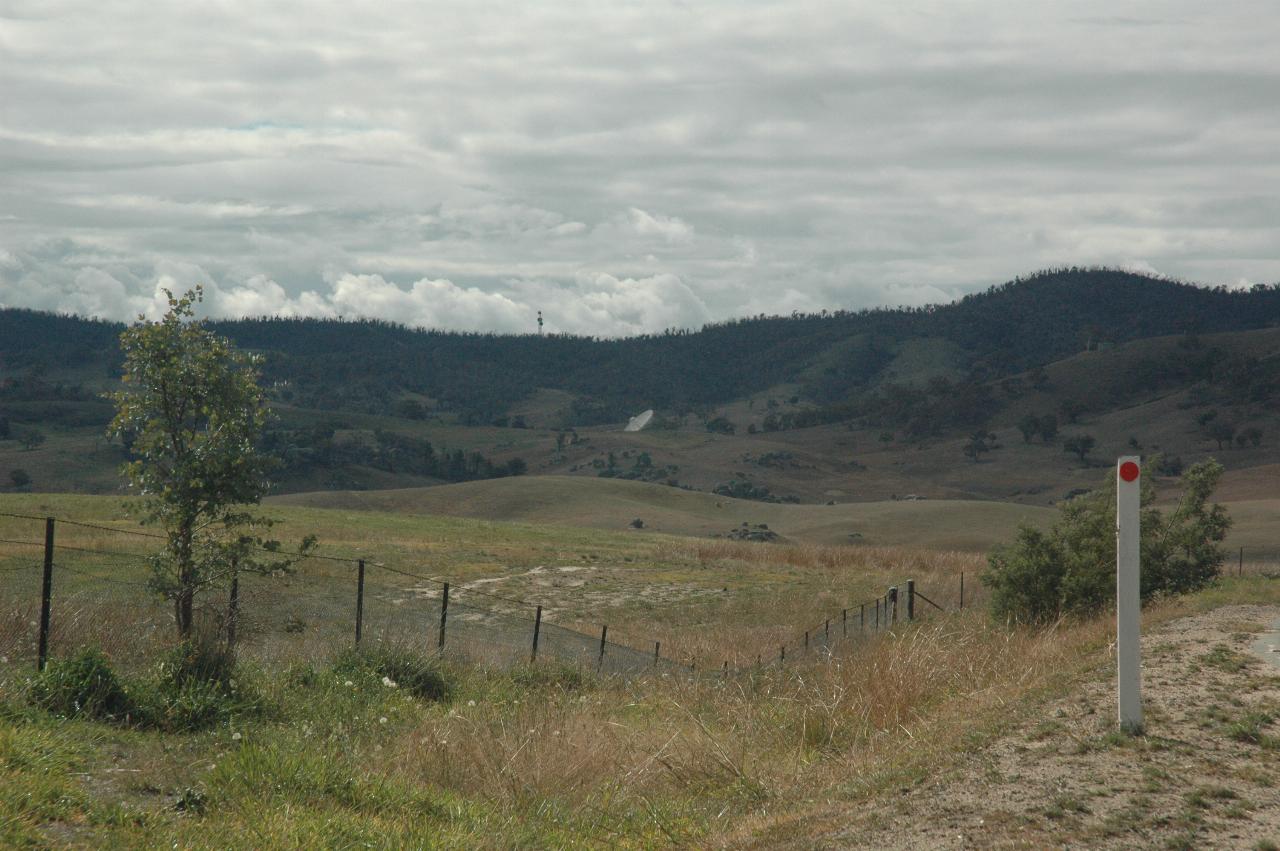
Upon turning onto the road to the Space Complex, the first sight is a sign asking to turn off mobile phones and other transmitters. Of course, it would be nice if they had a bay to pull off the road to execute this exercise. Off went the phone, and on went the journey.

The scene cresting a rise in the road approaching the station. One dish visible, and the tower on the far ridge - which I presume is for communications to/from the site, rather than the ubuiquitous phone tower.
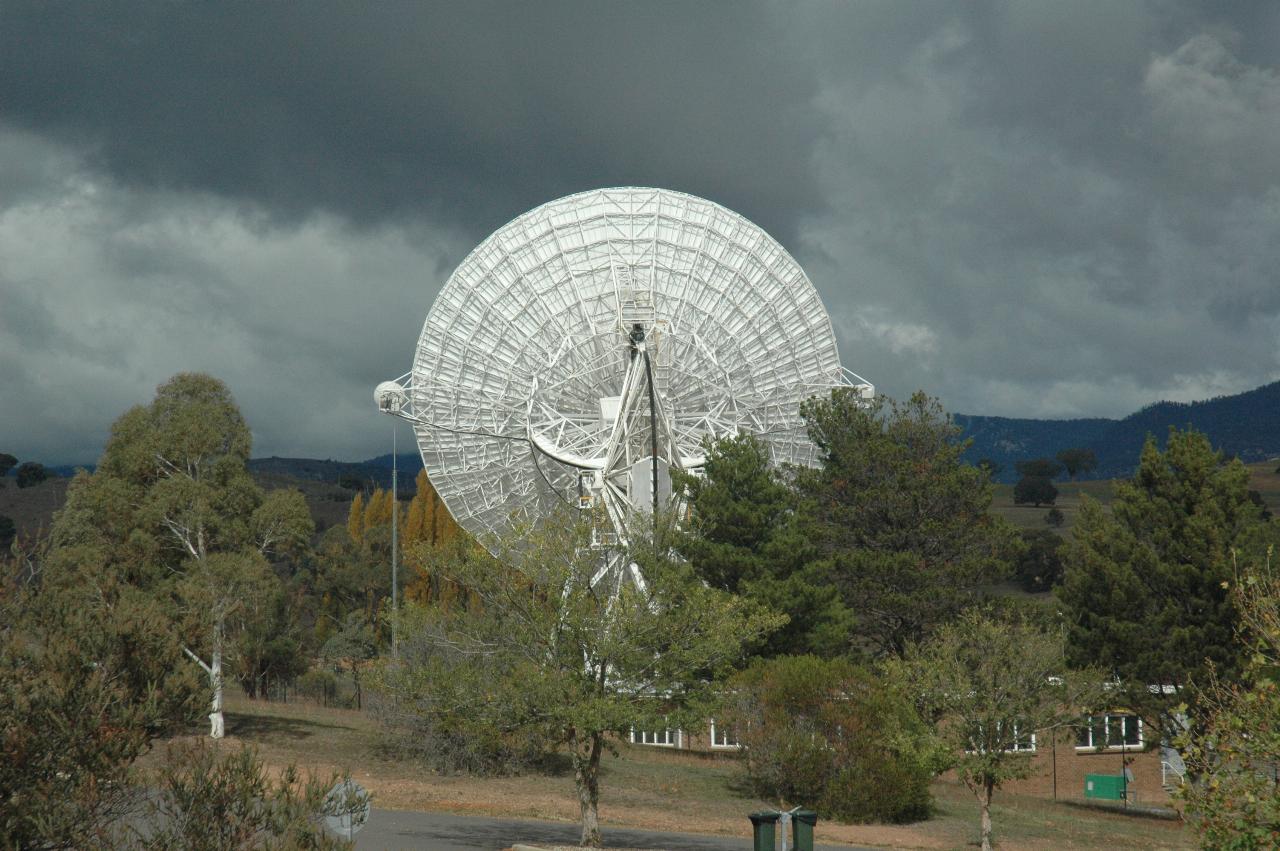
The dish visible in the above photo. Originally installed at Honeysuckle Creek, it was moved here when that station was closed in 1981. Neil Armstrong's first foot on the moon was received on it. This is the view from the path to the visitor centre; the road in is on the far side of this dish.
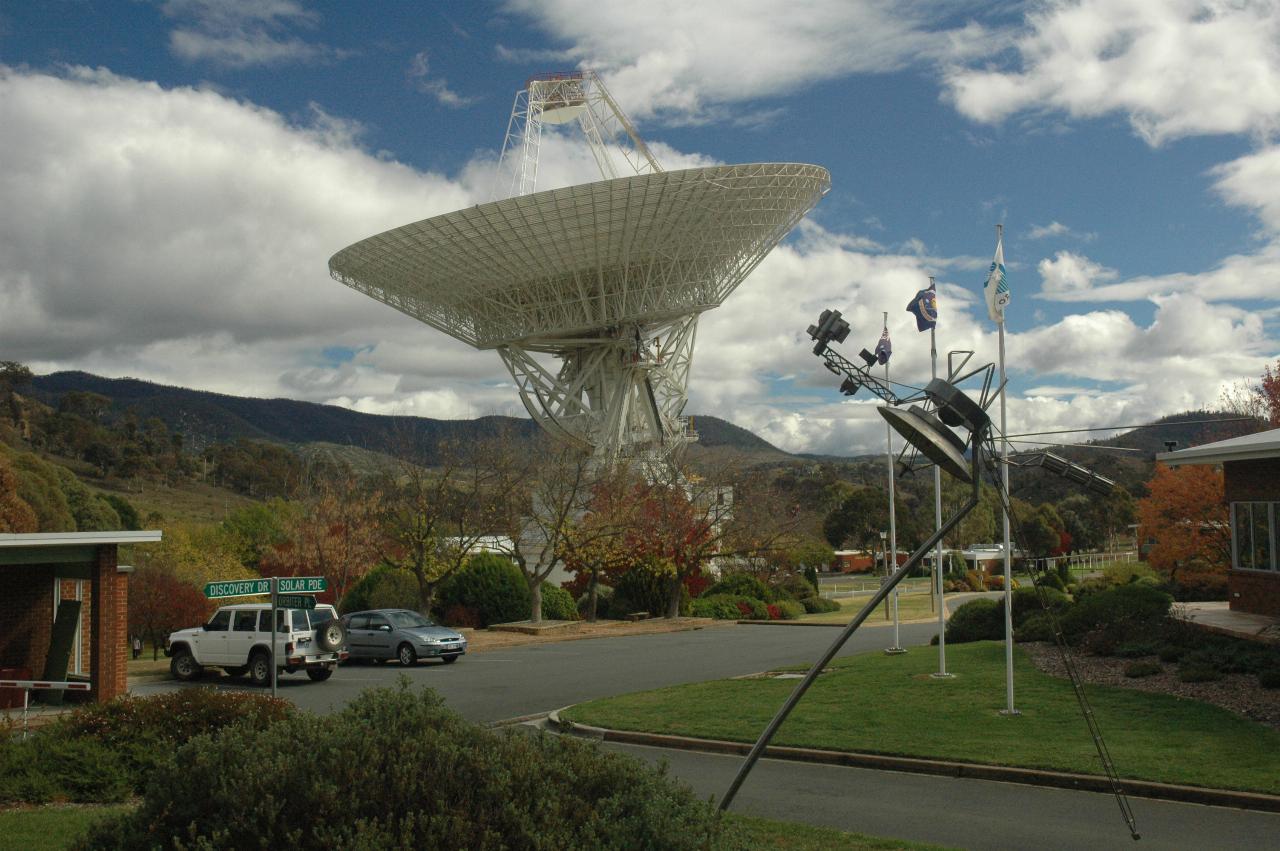
Another of the large dishes at Tidbinbilla. The structure to the right of the dish, in front of the flag poles, is a sculpture; alas the angle available (it's inside the restricted zone) makes a decent photograph difficult. The sculpture commemorates Voyager 2's encounter with Uranus on January 25th 1986.

Note the people to the left of the base.
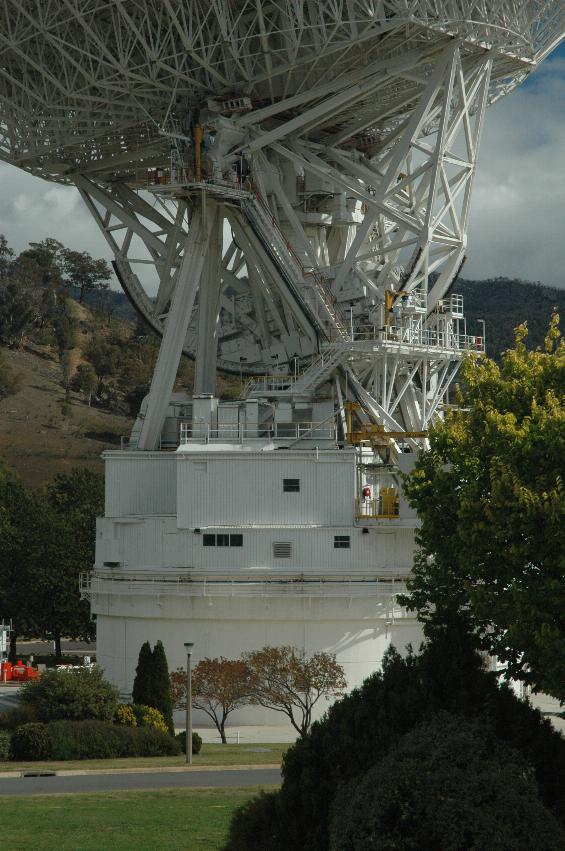
A closer view of the base and its drive mechanism
By now I was feeling hungry, so it was time to visit the exhibition in the Visitor Centre and also have lunch. The main attraction (to me) in the Visitor Centre was the full sized model of the Mars Rover.
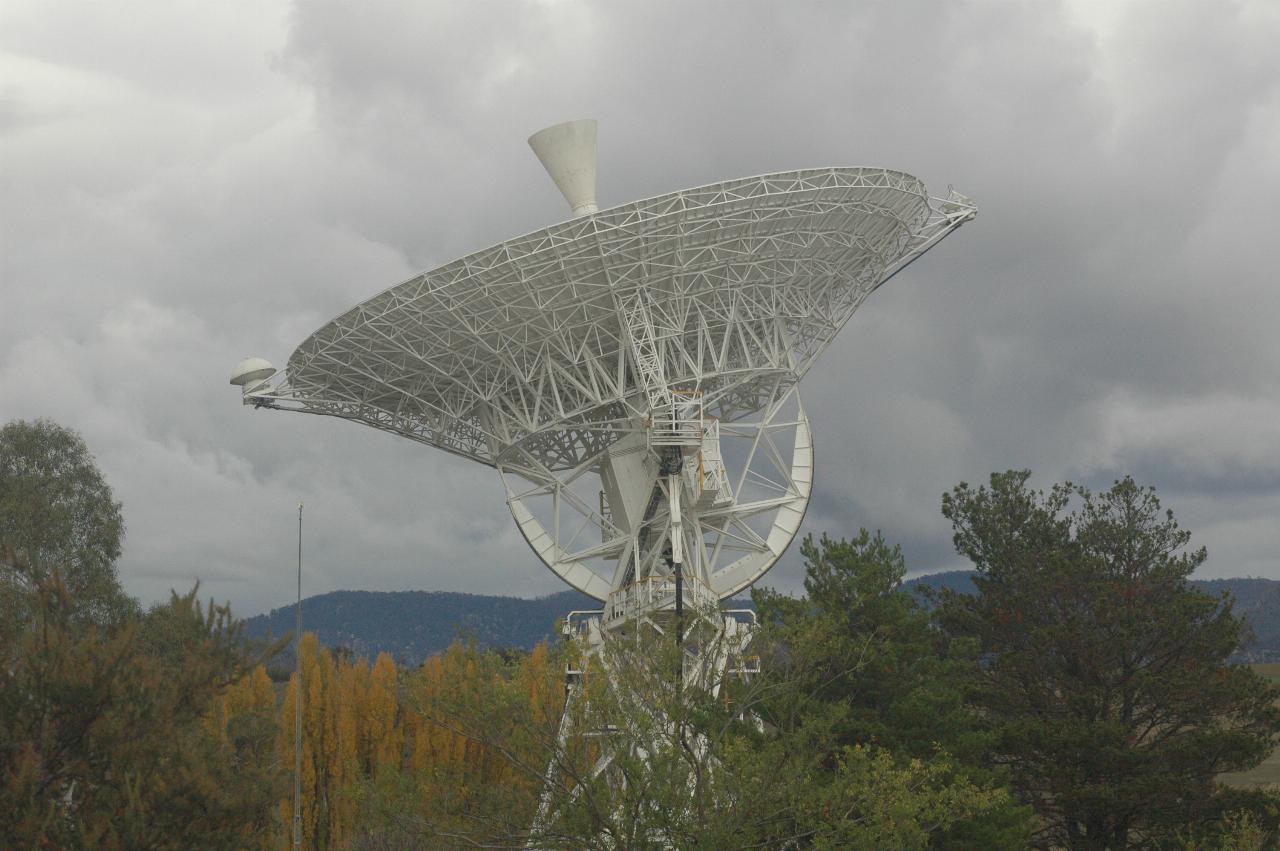
The first big dish, showing its receiving horn (top) and dishlets on the side. I'm guessing these might be for tracking purposes. And it moves quickly - 3 degrees per second! And while it can track rapidly moving satellites (low earth orbit) it also has the stability to track spacecraft orbiting the moon. And I did see it moving - despite it's age, it seems to have lost nothing of its nimbleness.
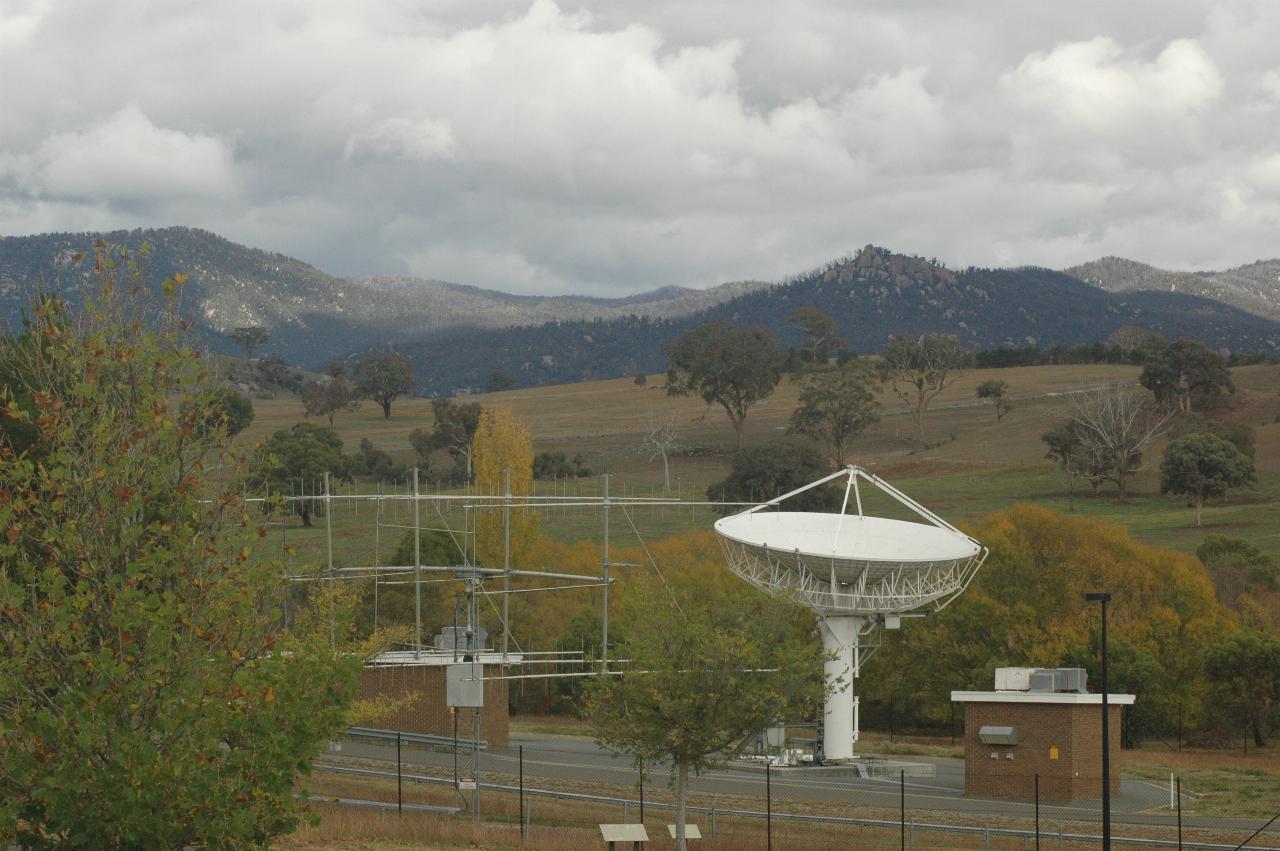
A much smaller dish and what I believe is a UHF array used for earth orbit operations. I suspect the latter came from Honeysuckle Creek, as there is a similar looking structure in some of the photos on the Honeysuckle web site above.

The view looking back from the road out. The dish on the far right is the ex-Honeysuckle Creek one. As part of the move, the drive was modified from hydraulic to electric.
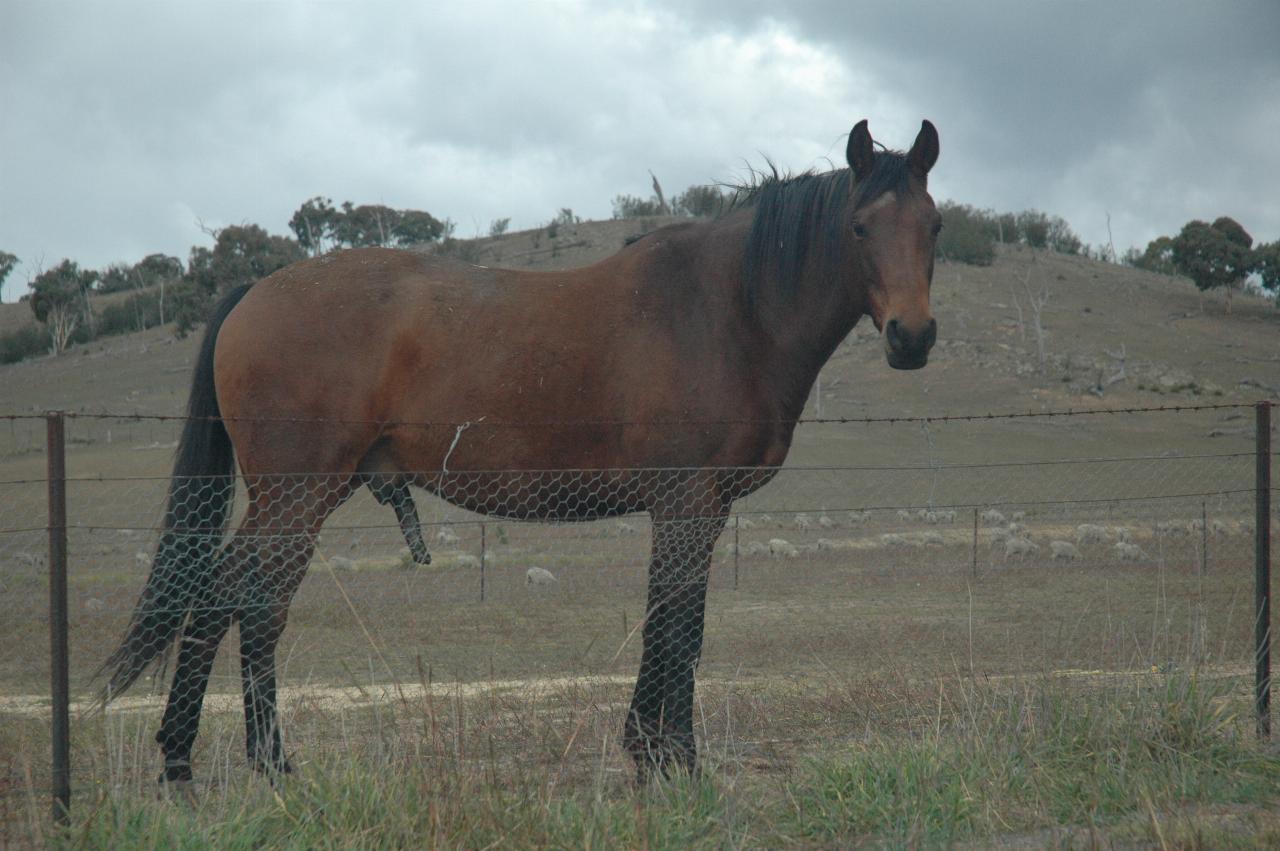
When I pulled the car off the road, there was a horse in the paddock next to the road, but about 50m up ahead. By the time I had finished taking photos and got back in the car, I noticed the horse had walked down to see what was going on. Given it's level of excitement, I suspect it leads a rather lonely life, if a stock standard Corolla will do that to it!